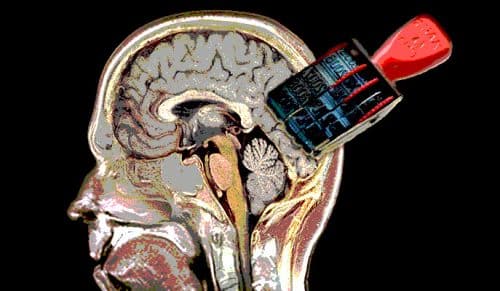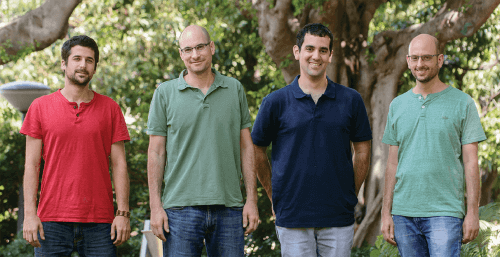The scientists of the institute recorded the brain activity in mice, and discovered "time stamps" in the activity patterns of large groups of nerve cells

Events from the past are arranged in our memory on a timeline. We can usually recall various errands we did on a certain day or relive the trips we took last summer. But how does the brain connect the memory of the events and the time when they occurred?
A group of scientists, led by Dr. Yaniv Ziv from the Department of Neurobiology at the Weizmann Institute of Science, which included Dr. Alon Rubin and research students Nitzan Geva and Liron Shaintoch, documented the brain activity of mice using an innovative method of optical imaging, which Dr. Ziv developed as part of his post-doctoral research: A tiny helmet equipped with implanted microscopes and lenses, and thus monitor the activity of nerve cells in their brains. The method makes it possible to predict the electrical signals of thousands of nerve cells, deep inside the living brain, for a long time.
In his previous research, Dr. Ziv discovered that even when the mice walk the same route in the maze every day, this route is represented in their brains in different subsets of cells in the hippocampus - an area of the brain that is responsible for creating memories of various events and storing them. in his current study, which was recently published in the scientific journal eLife, Dr. Ziv and his group members examined how these circuits change over time. The scientists discovered a component of the neural code in the hippocampus that can represent the time dimension in long-term memory. As part of the study, the mice visited two different mazes every day, and during each navigation the nerve cells in their brains sent signals according to the position of the mouse. Although the pattern of neural activity was unique to each maze, and to a large extent maintained over different days, there was also some similarity between the activity patterns of the cells in the two mazes on any given day. This similarity can be seen as a "time stamp", and it changed gradually every day - both in all that was said in the neurons that participated in it, and in the pattern of their activity.
Unlike the location coding in the brain, which can be identified by the activity of individual cells, the time stamps can only be discovered by examining the gradual changes that occur in the activity patterns of relatively large groups of nerve cells. The institute's scientists were able to discover these signatures by recording the activity of many more nerve cells than was previously possible. In addition, the scientists developed computational methods for analyzing the findings. With the help of these methods - just based on viewing the data and identifying the time stamp - they were able, in most cases, to correctly determine which day the documentation took place.

This study confirms the concept that, in terms of the neural code in the hippocampus, every experience in life is indeed unique. Even when we visit the same place many times, each visit activates a slightly different group of neurons in the hippocampus, and it represents the event in memory with a unique time stamp. Therefore, in the brain, each experience is coded differently from others, but it is also linked to experiences that occurred at a time close to it.
The scientists believe that the time stamps allow us to arrange the memories on the timeline, so that we can attribute several events to the same day or to the same part of the day, even if we moved during that time between several different places and experienced different things. "The time stamps link different events," says Dr. Ziv. "It is not about a memory that is related to a certain date when we know the date - for example, what happened on September 11, 2001. It is about associating a certain event in relation to the other events that we remember. It is possible that this is how the personal timeline is created in our consciousness, which is essential to our autobiographical memory and sense of self."

One response
Fascinating research! From a cognitive point of view, is time actually a type of emotion that arises as a result of the time stamp? So the stronger the seal because it's older, the longer the event time will feel? I would suggest conducting a supplementary study that would find physiological connections between the time stamp and the emotion of time, which would provide a more comprehensive picture of our perception of time.